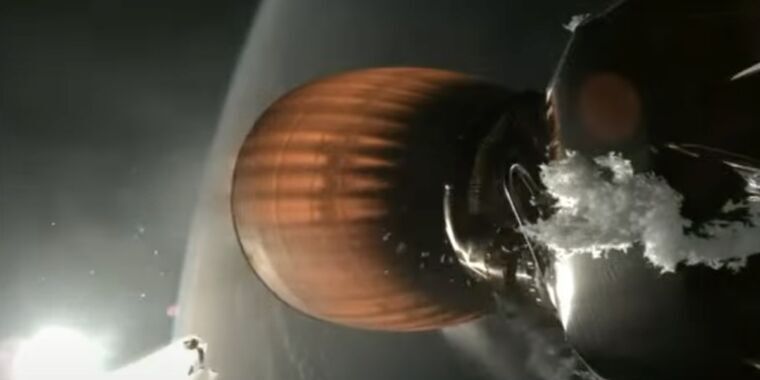- cross-posted to:
- space@lemmy.world
- cross-posted to:
- space@lemmy.world
A SpaceX Falcon 9 rocket suffered an upper stage engine failure and deployed a batch of Starlink internet satellites into a perilously low orbit after launch from California Thursday night, the first blemish on the workhorse launcher’s record in more than 300 missions since 2016.
Going into Thursday’s mission, the current version of SpaceX’s Falcon 9 rocket, known as the Falcon 9 Block 5, was indisputably the most reliable launch vehicle in history. Since debuting in May 2018, the Falcon 9 Block 5, which NASA has certified for astronaut flights, never had a mission failure in all of its 297 launches before the ill-fated Starlink 9-3 mission.
Assuming the Starlink satellites can’t be saved, and if Thursday night’s launch is scored a complete mission failure, the Falcon 9 Block 5 still has a 99.7 percent success rate. This is still an enviable number for any launch company.
99.7% success rate is still pretty damn impressive.
And still unmatched.
What other launch system comes close?
Other than Soyuz I don’t think any other rocket has flown enough times to justify the comparison.
I’d include the R-7 family (Soyuz, Molniya, Voskhod, etc.), Proton, and Space Shuttle.
Hopefully they get a longer streak over the next 2 years after finding and fixing whatever caused this and returning to flight.
This is the best summary I could come up with:
A SpaceX Falcon 9 rocket suffered an upper stage engine failure and deployed a batch of Starlink internet satellites into a perilously low orbit after launch from California Thursday night, the first blemish on the workhorse launcher’s record in more than 300 missions since 2016.
Elon Musk, SpaceX’s founder and CEO, posted on X that the rocket’s upper stage engine failed when it attempted to reignite nearly an hour after the Falcon 9 lifted off from Vandenberg Space Force Base, California, at 7:35 pm PDT (02:35 UTC).
A second burn with the upper stage engine was supposed to raise the perigee, or low point, of the rocket’s orbit well above the atmosphere before releasing 20 Starlink satellites to continue climbing to their operational altitude with their own propulsion.
Ars has asked the Federal Aviation Administration, which licenses all commercial space launches in the United States, if it will require SpaceX to complete a mishap investigation before resuming Falcon 9 flights.
Some customers, especially NASA’s commercial crew program, will likely want to see the results of an in-depth inquiry, and require SpaceX string together a series of successful Falcon 9 flights with Starlink satellites before clearing their own missions for launch.
A first stage engine failure on the fourth Falcon 9 launch in 2012 prevented the rocket from deploying a secondary payload into the correct orbit, but SpaceX was still able to complete the primary mission of delivering cargo to the International Space Station.
The original article contains 1,578 words, the summary contains 243 words. Saved 85%. I’m a bot and I’m open source!



